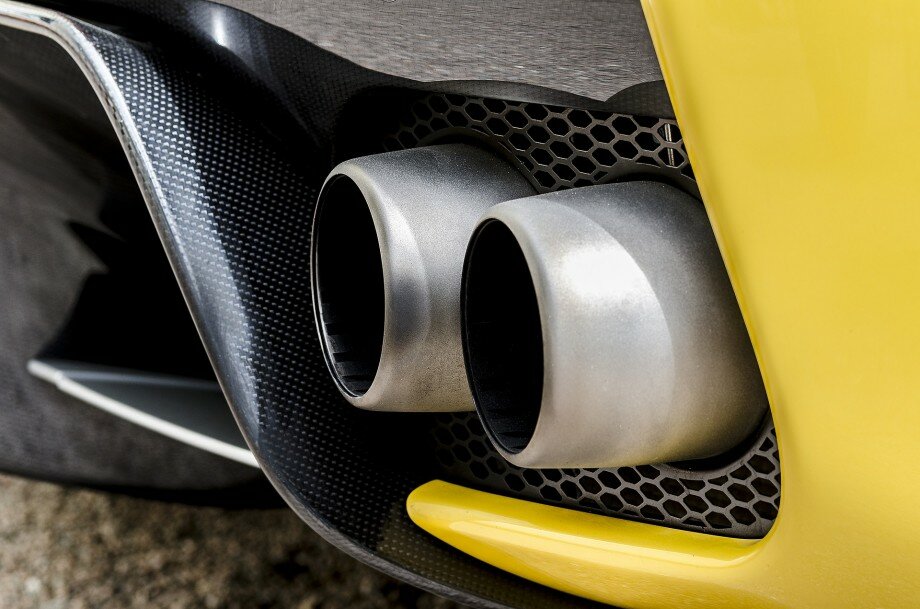
March 16, 2017
President Trump Calls For Fresh Look At Federal Auto Emissions Rules
During his visit yesterday to the American Center for Mobility at Willow Run Airport in Ypsilanti, Mich. (an automatous and connected vehicle testing facility) President Trump called for a review of the 2022 through 2025 [...]
During his visit yesterday to the American Center for Mobility at Willow Run Airport in Ypsilanti, Mich. (an automatous and connected vehicle testing facility) President Trump called for a review of the 2022 through 2025 vehicle emissions rules approved by the EPA in the final days of President Obama’s administration. This action basically doubled the average miles per gallon that any automaker’s overall fleet of vehicles must achieve.
The issue
An estimated 3.2 trillion miles are driven on American roads each year. These vehicles can produce a wide range of emissions, including hydrocarbons, carbon monoxide, sulfur oxides, nitrogen oxides, volatile organic molecules and particulate matter. Sulfur and nitrous oxides, in particular, can react with water and other elements in the air to form the well-known acid rain.
The amount of emissions released into the atmosphere during driving is a factor of the emissions control technology incorporated into vehicles of all types, from family car to heavy truck; fuel quality, lower sulfur in particular helping achieve better performance of that emissions control technology; and, the total number of gallons of fuel used. Thus, the focus on vehicle miles per gallon (mpg) standards—a long familiar legend on those large stickers on the sides of vehicles on dealer lots.
A long regulatory road
California has always been a bellwether for emission standards, given its pollution issues and the size of its vehicle market. Exhaust emission standards were first set in California for the 1966 model year, followed by the U.S. as a whole in 1968. Up to this day, standards set by the California Air Resources Board (CARB) continue to drive regulatory activity across the United States, including at the Federal level.
Next came the all-familiar catalytic converter, which helped prompt the removal of lead from fuel, and a host of other emissions control technologies employed on present-day vehicles.
In concert with restricting the emissions of individual vehicles, Congress established Corporate Average Fuel Economy (CAFÉ) standards in 1975. First prompted by the 1973 oil embargo, these standards have gradually evolved to the present-day (2010) standard of 27.5 mpg for passenger cars, with light trucks having separate standards.
Throughout these intervening years, automakers have had to carefully balance the output of different models of vehicles (in the quest to achieve an average overall fuel economy for vehicles produced in any one year), against the demands of consumers. Certainly, the appeal of smaller, more fuel-efficient vehicles often tracks with the cost of fuel. But consumer preference and family needs also drive sales. And many Americans, for a variety of reasons, still prefer larger vehicles, including light trucks and SUVs.
At the same time, the quality and longevity of vehicles continues to improve, prompting longer service lives and years on the road. Thus, even as CAFE standards advance, there will be a lag in impacting the overall emissions from vehicles, especially if overall miles driven per year increases.
Moreover, while electric and hybrid vehicles are gaining some traction, we are a LONG ways from replacing the internal combustion engine and electric and hybrid vehicles have their own environmental issues. Consider the manufacture, servicing and recycling of batteries in quantity, as well as the environmental costs of producing electricity.
One of President Obama’s last acts
Toward the end of President’s Obama’s second term, the EPA had until April 2018 to determine whether newer, stricter CAFE standards, first proposed in 2012, “were feasible.” Instead, the Administration decided to adopt the 2022 to 2025 emissions rules, which would raise the fleet average fuel efficiency mandate to 54.5 mpg, almost twice the present standards.
These standards impact potential total pollution of our air, which must be balanced against the technical feasibility and costs needed to achieve this target and whether consumers will accept the vehicles and sticker prices these standards bring forth.
Enter President Trump
Believing that unneeded regulations on automakers are adverse to job creation, President Trump announced that the EPA will return to the original mid-term review process, which would be 2018, to evaluate greenhouse gas emissions. This would rollback the recent 54.5 mpg fleet mandate.
“Just days before my administration took office, the EPA cut short a mid-term review. Today, I am announcing that we are going to cancel that executive action. We are going to restore the originally scheduled midterm review,” Trump was reported as saying.
The outcome of this review is not a foregone conclusion; the higher standards could remain or be modified downward, but still be stricter than today’s standards. However, President Trump does seem set on streamlining the government’s regulatory activity. In his budget proposal to be outlined later in the week, the President will recommend cutting EPA funding by 31 percent—or almost one-third.
At stake are American jobs, technical capabilities, consumer spending and economic growth, as well as our nation’s air quality. Stay tuned as we hear from environmental and citizen groups, business leaders, and Congress.
Share This Story, Choose Your Platform!
Marx Layne is your competitive advantage.
Your reputation and success are our only concerns.
